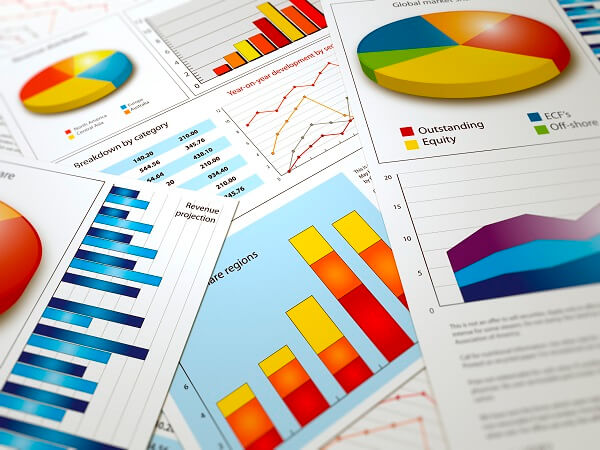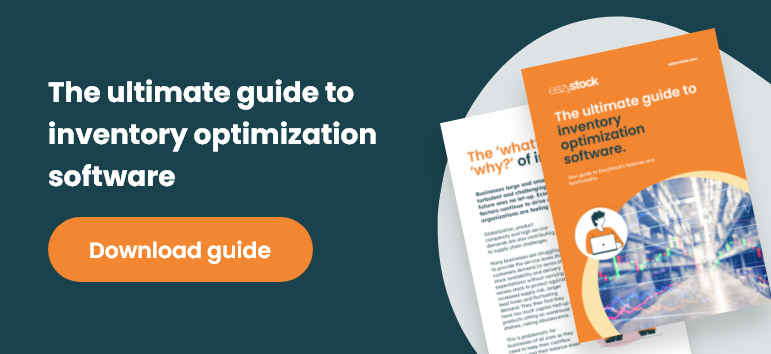What is Inventory Planning: 8 Signs Why You Need It
Do you need inventory planning software?
Enterprise Resource Planning (ERP) platforms are a big investment for any organization. They also take a lot of time and resources to design, customize and implement. But once they’re up and running, there’s no doubt they offer a wealth of benefits, including streamlined processes, improved productivity, centralized data and better departmental collaboration.
But unfortunately for inventory management teams, ERPs often lack functionality when it comes to more sophisticated inventory planning and replenishment requirements. Stock planners are often confronted with telltale signs that they need further automation to improve demand forecasting, optimize stock levels and automate replenishment tasks. Are you one of these people? Here are eight warning signs to help you decide…
1. Your demand forecasting is too simplistic
Effective inventory planning and control begins with accurate demand forecasting software. If your actual demand is often way above or below your predictions, then the spreadsheets or ERP you’re using could simply be inadequate. It’s very probable that you either use a basic moving average formula to calculate demand or simple mathematical forecasting techniques. Either way, both methods will fall down unless they take into account the product life cycle stage of every item in your portfolio.
 This is because the demand pattern of items in their growth phase of the product life cycle will be different to those at maturity or in decline. During ‘growth’, items see an increase in demand; at ‘maturity’ demand usually remains steady, becoming more erratic as it reaches ‘decline’ as sales become less consistent.
This is because the demand pattern of items in their growth phase of the product life cycle will be different to those at maturity or in decline. During ‘growth’, items see an increase in demand; at ‘maturity’ demand usually remains steady, becoming more erratic as it reaches ‘decline’ as sales become less consistent.
The ‘demand type’ of a product determines the best statistical algorithms to use for forecasting. Some algorithms are better for erratic demand types, while others give more accurate results for more stable demand. Basic forecasting calculations cannot take this into account.
Read our blog post on how to calculate your demand forecasting accuracy for further information.
2. You’re unable to forecast seasonality or deal with volatile demand fluctuations
If you struggle to produce accurate forecasts for seasonal products or SKUs where demand radically fluctuates up and down, it’s time for an inventory planning overhaul! Every business wants to capitalize on busy sales periods and running out of key inventory items before the end of the season can dent sales. At the same time, being left with excess stock until the following season can tie up important capital in inventory and storage costs.
It’s critical that inventory systems make forecast adjustments for demand variables, such as seasonality and trends and promotions on top of your base demand.
3. Your stock levels are growing, inventory turnover is slipping
If stock in your warehouse is beginning to pile up, alarm bells should be ringing about your current inventory planning processes.
You should be able to segment your stock into three types: healthy stock, excess stock and obsolete stock. Obviously you want more of the healthy and less of the excess and obsolete. If you’re over-ordering items that aren’t selling, excess stock will soon mount up and you’ll see your inventory turnover KPI move in the wrong direction. Capital tied up in stock can also be bad for your overall business, affecting carrying costs, liquidity and cash flow.
4. Your customer service levels are highly variable
How do you measure your warehouse’s ability to fulfill customer orders? No matter whether you use a fill rate, service level, service index or perfect order percentage KPI, if they’re not consistently high then it’s time to investigate why. Often an inability to fulfill orders is due to stock outs which can link back to poor forecasting or inadequate inventory replenishment processes.
5. There’s a growing trend of lost sales or accounts
Stock availability issues can often lead to a drop in sales. If you identify a link between the two, it’s worth considering solutions to the root cause – poor inventory planning.
You may be tracking the obvious consequences of stock outs, such as abandoned online baskets or a decline in sales numbers, but don’t forget to monitor longer-term signs at the same time. For example, if you continually fail to fulfill customer demand, you could see customers moving to competitors for good or find you lose important customer accounts due to an ability to deliver orders on time.
6. You are constantly fire-fighting
When you and your inventory planners are constantly fire-fighting, it can be tough to achieve your targets or have time for strategic planning. Dealing with back orders and expediting replenishment orders is inefficient and costly for any business. A smarter approach is to address the cause of problem.
7. Inventory planning and replenishment is time-consuming
If you’re using manual processes to reorder stock, this is a clear sign that it’s time to consider upgrading to inventory planning software. Processing and checking every purchase order manually is time-consuming. Plus it’s almost impossible to reduce your order cycle times (the time between placing each order), which means you’ll be ordering less frequently and have more money tied up in stock.

8. You’re unable to manage varying supplier lead times
Do you struggle to account for your individual supplier’s lead times and reorder parameters when placing orders? For example, do you often get caught out by annual shutdowns, busy periods or holidays such as Chinese New Year? Or do you find it hard to keep track of min/max order quantities and contracted reorder frequencies? If these challenges increase your risk of stock outs and lead to inefficient replenishment practices – it’s time to talk about inventory planning automation!
Know your inventory planning limits!
Many small- and mid-sized businesses use ERPs or spreadsheets for their inventory planning, but most will agree they have limitations. Most ERP systems are ideal for tracking inventory and monitoring stock levels. But when it comes to inventory optimization functionality, such as advanced demand forecasting, stock optimization and automated replenishment, they lack the capabilities. These inventory control and planning processes therefore end up being executed in spreadsheets, which is time-consuming, can lead to human error and can become unmanageable as product portfolios expand.
If you or your inventory management team are experiencing the above challenges it may be time to consider inventory planning software such as EazyStock.
EazyStock is easy to implement – the inventory optimization software simply plugs into your ERP. It then removes the need for manual inventory planning in spreadsheets, allowing you to automate and speed up forecasting, stock management and purchasing activities. Armed with better stock planning tools, you and your team will have more time to think strategically and focus on improving your efficiency and profitability.









